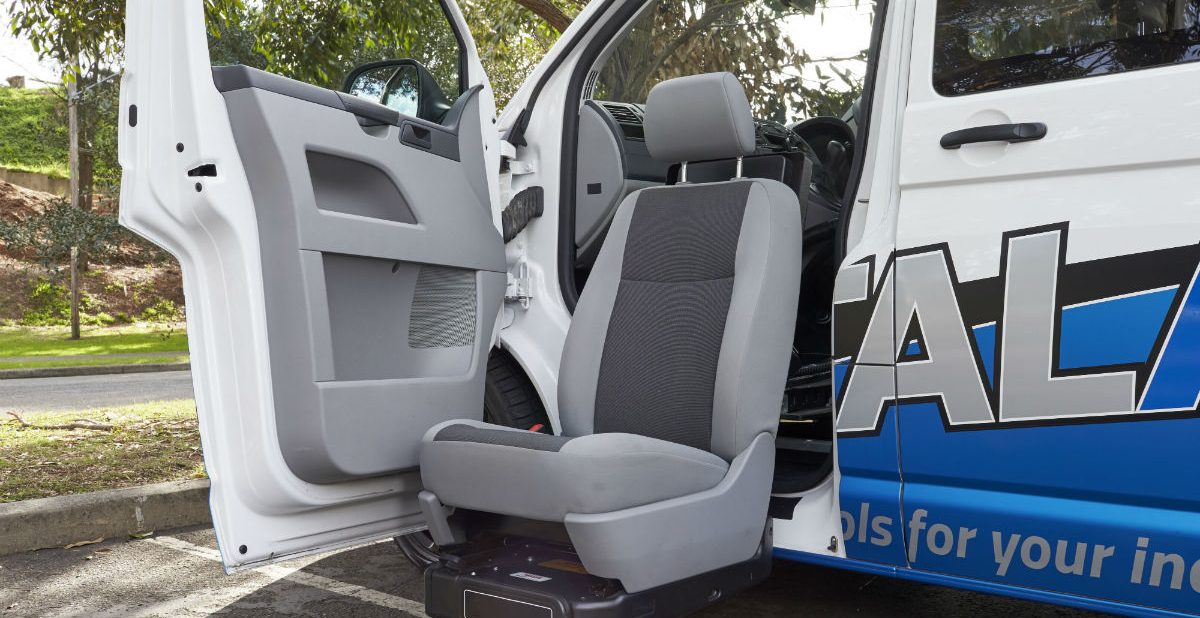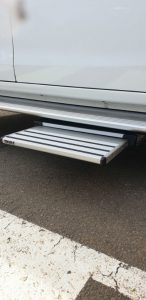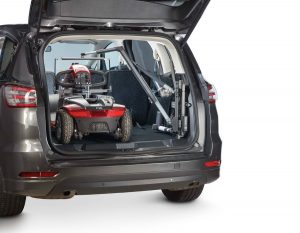
Your ticket to freedom starts with your car
By Peter Miller, Brazier Mobility
We all need to get out of the house; it’s a fundamental freedom and basic right. But when you have a child passenger with a disability, it can get complicated. So here’s the good news…there are literally hundreds of options out there to help you and your passengers get wherever they need to be – in your own car with the least amount of hassle. “How?” I hear you ask. Read on!
Let’s start with your car, wagon or van. Is it reliable and well maintained? Is it large enough to carry your passengers and all of their gear comfortably? Was that a “yes” I heard? Excellent, you’re off to a good start. Starting with the right vehicle is key to happy travelling with a passenger that has a disability. Your car is your lifeline to the outside world, so look after it!
Regular maintenance is the key to not having to wait for an access cab to take everyone home while your car is towed to the mechanics.
Now you’ve got your vehicle sorted, let’s take a look at the things you might need to help you get out and about safely.
CHALLENGE #1:
GETTING PASSENGERS IN AND OUT
A passenger with a disability will often need help getting in and out of the car. For some it might be a simple matter of a grab point or slide plate to transfer from a chair to the car. For others it might be a bit more complicated.
“The golden rule is this….look after yourself whilst you’re looking after others!”
It’s hard to care for others if you injure yourself in the process. If you’re not
sure, have a think about whether your passenger loading techniques would be acceptable in a workplace. If they wouldn’t, there’s a good chance you might need some extra help.
HERE ARE JUST SOME OF THE SOLUTIONS AVAILABLE TO HELP GET YOUR PASSENGER IN AND OUT OF THE CAR:
Slide transfer plates and grab rails – can be simply installed to give a bit of extra help to passengers wanting to get into the vehicle themselves. They’re pretty unobtrusive and they won’t break the bank.
Electrical transfer plates – fold down from the passenger side of the car and can be raised or lowered to help get in and out of the car. These have the added benefit of helping passengers enter or exit the vehicle from/to a standing position, even if they do not have a wheelchair.
Side steps – can be manually folded out or automatically deployed to assist passengers who are still mobile but need a little help getting into the car.

Ramps and lifters – are usually installed on larger vehicles and used when
a wheelchair passenger is likely to be travelling in the vehicle while still in their chair. Location of ramps and lifters will depend on the vehicle and will usually be deployed from under the body of the vehicle (underfloor) or from the inside of the vehicle (internal). Typically, an underfloor solution will be more expensive due the compact technology it relies upon – but it’s a great solution when space is an issue. Just
remember, if your vehicle is going to be travelling over rough, muddy ground
or in constantly wet conditions an underfloor ramp or lifter will be at more risk
of damage.
Personal lifters – work by helping passengers transfer from their wheelchair to the front of the car. A sling is placed under the passenger when they are in their wheelchair and the hoist then lifts them out of the chair. They can then ‘swing’ into the car and be lowered to the vehicle seat. If you have a heavy passenger, a personal lifter is an ideal solution to help save your back!
Swivel/lowering seats – are amazing! These genius bits of kit turn
a bucket seat into a seat that swivels, turns, lowers and raises. They’re programmable to suit your vehicle and they make transferring in and out so, so easy. If your passenger is able to transfer in and out of the vehicle seat when it’s outside the car then this is a terrific solution for you! These are available with both electric and manual options. Only the electrical seats have a raising/lowering option though.
CHALLENGE #2:
STORING ALL THE STUFF
Travelling with equipment means it needs to be loaded safely and travel safely. Motorised chairs and scooters can be heavy, and you can break your back loading these in and out every day. But there are solutions!
If you have a wagon or a hatchback then most people choose a scooter/
wheelchair hoist to pick up their wheels and load it into the back. These
units look like a mini crane to lift, lower and swing things into place. If you’re
looking at these then you need to be sure you have room for your equipment,
plus the hoist, as well as working room for the hoist to do its job. Depending
on your equipment and the type of vehicle you have, you may also need
to strengthen the floor so it doesn’t collapse under the weight of your
equipment. Access to your spare wheel is also something to consider when
installing and using these hoists.


An alternative to an equipment hoist is an external tow bar lifter. Think of these like a mechanical bike rack that attaches to a medium duty or heavy- duty tow hitch. Loading a wheelchair or scooter is a simple matter of docking the device at ground level and raising it off the ground before you drive away. The advantage of these devices is that you can still use your car’s storage and you’re not restricted to using it for a wagon or hatchback. Just remember that anything you store outside your car will be exposed to the elements – so a quick cleanup at the end of each trip might be needed!
Most importantly, when you’re travelling with equipment in your vehicle you must think about safety.
A handy rule of thumb is that a loose object in your car will provide the force of 20 times (or more) of its own weight in a crash.
So even a 40kg scooter can deliver 800kg or more of force in a crash – and that’s deadly. There are plenty of options to secure your stuff in the car so please, be safe and lock it down with something more than a couple of “Octopus Straps”.
CHALLENGE #3:
MANAGING BEHAVIOURS
Not every passenger is happy to sit quietly in the back of the car and that’s where you may need to take steps to make it safe for both driver and all passengers in the vehicle, as well as to protect the vehicle itself.
Passenger screens – separate drivers and/or front passengers from being distracted by passengers in the rear of the car. These polycarbonate screens run from floor to ceiling of your car to prevent contact from behind the front seat. A well-fitted screen will be strong (usually steel framed) and have virtually no gaps for prying fingers that can pull the screen loose. Remember, screens need to be bolted to your vehicle so if you’re precious about having a few extra holes around the place then this may not be the option for you.
Polycarbonate window barriers – are a useful way to prevent breakages. They usually consist of a custom steel frame bolted to your vehicle to hold the screen in place. Once again, you’ll get a few free holes with this solution so you need to be prepared for this.
Harnesses – can help secure a passenger to keep them safe in their seating position and prevent them from roaming around the car.
ONE LAST OPTION!
Sometimes it can be easier to purchase a Wheelchair Accessible Vehicle so your passenger can simply wheel in and out when you travel. These come in small, medium and large sizes, depending on how many other passengers you need to travel with. Only certain vehicles are suitable for conversion so it’s best that you talk with your vehicle modifier before you go too far.
So there you have it! Remember that each passenger will have their own individual travel needs and these too will vary depending on the vehicle you have. Best advice is to discuss your needs with your health professional, as well as your local vehicle modifier.
Price is certainly something you need to consider but beware, cheap components are creeping into the market and some of these have proven unreliable and difficult to maintain. If your budget allows for known and trusted brands, it’s worthwhile buying equipment you know will be reliable.
Remember too, that some modifications need to be engineer certified and passed by your state authorities. Requirements vary between state and territories; your local vehicle modifier should be able to advise you on what to do here.
And finally, if you are having your vehicle modified, make sure that anything that uses motors, straps or hydraulics needs to be inspected and regularly serviced at the same time as you have your vehicle serviced.
Brazier Mobility has been providing quality vehicle modification solutions for people from all over Australia with disabilities for over 30 years. They perform all types of installations and conversions, large or small, to all types of vehicles and buses, even farming equipment! They love the work they do and they are a proud supporter of Variety Australia for over 20 years. Visit braziermobility.com.au for more info.







